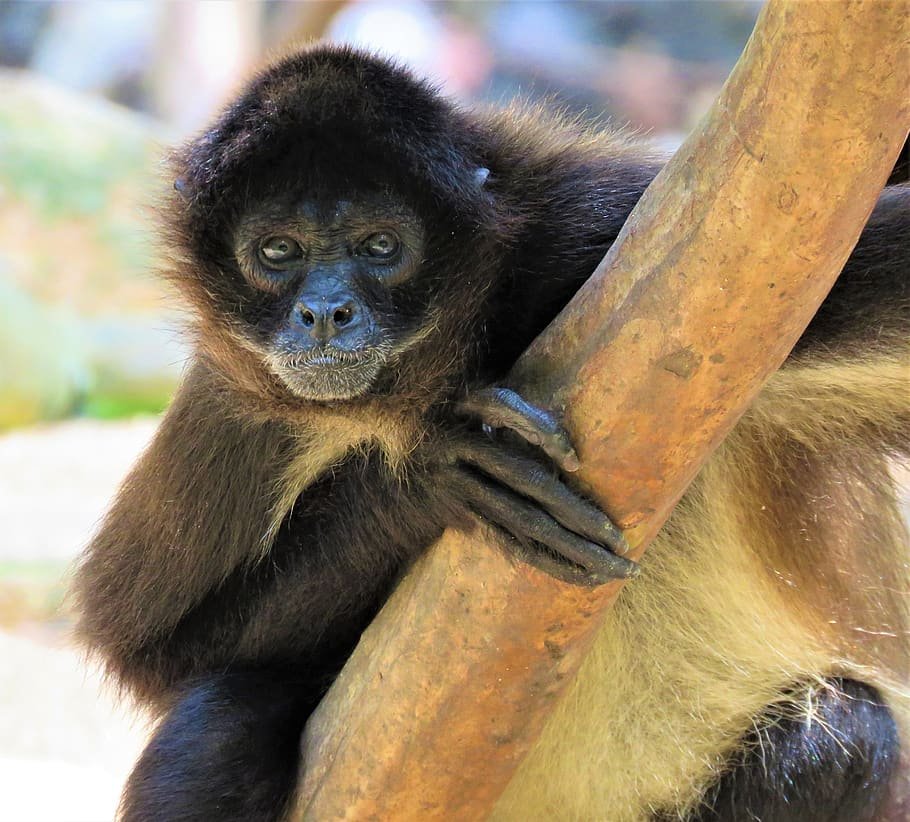Spider Monkey
Far north of Mexico and the tropical rain forests of South and Central America, are where Spider monkeys live. Spider monkey is one of many monkey categories.

Behavior
Their prehensile tails and lanky-long arms enable them to swing through the trees. Spider monkeys are nimble and can maintain a powerful grip on branches, where they spend most of their time, even though there are no thumbs in their hands. Moreover, these monkeys are New World primates, which love to gather in groups of up to 2 or 3 dozen faunas, because of their social nature. When it’s time to sleep, these dozens get half one or fewer sleeping parties. Early in the day, smaller groups go to forage in the treetops where they find their food. These noisy animals feed on spiders, bird eggs, leaves, fruits, and nuts. They often communicate with many loud sounds such as barks, screeches, and calls.
Breed Overview:
SCIENTIFIC NAME: Ateles
DIET: Omnivore
WEIGHT: 6 kgs
SIZE: 35.5-66 cm
LIFE EXPECTANCY: Twenty-two years
GROUP NAME: Troop
TYPE: Mammals
COMMON NAME: Spider Monkeys
Reproduction
Usually, a single baby is given birth every 2 to 5 years. Babies are completely dependent and need to be cared for. So, mothers overprotect their young monkeys for about 2.5 months and they continue caring for them and wandering clinging them to their backs for the 1st year of their lives. Then, the little ones tend to have fun with each other and start to investigate on their own.
Threats to Survival
Spider monkeys are usually hunted by indigenous peoples for food. However, the existence of humans makes them upset as well as agitated. Moreover, spider monkeys’ homes are shrinking because of deforestation and logging. Spider monkeys can use only their tails to hang up high up in the tropical forest shades while wrestling and playing among themselves. Baby spider monkeys feel safer, as they ride around on their mother’s back, by wrapping their tiny tail around her tail.
Share this to let other people know about it!
